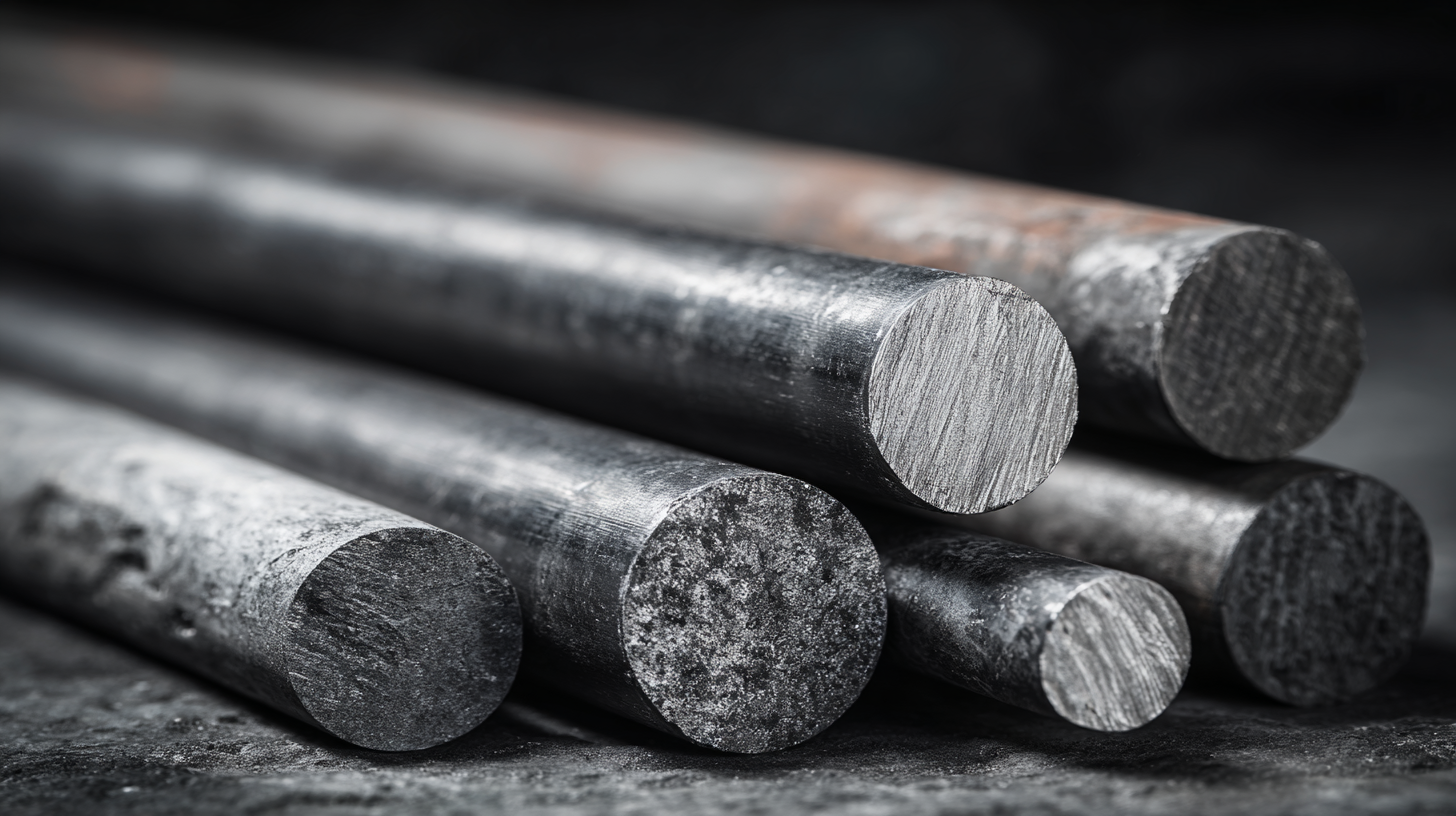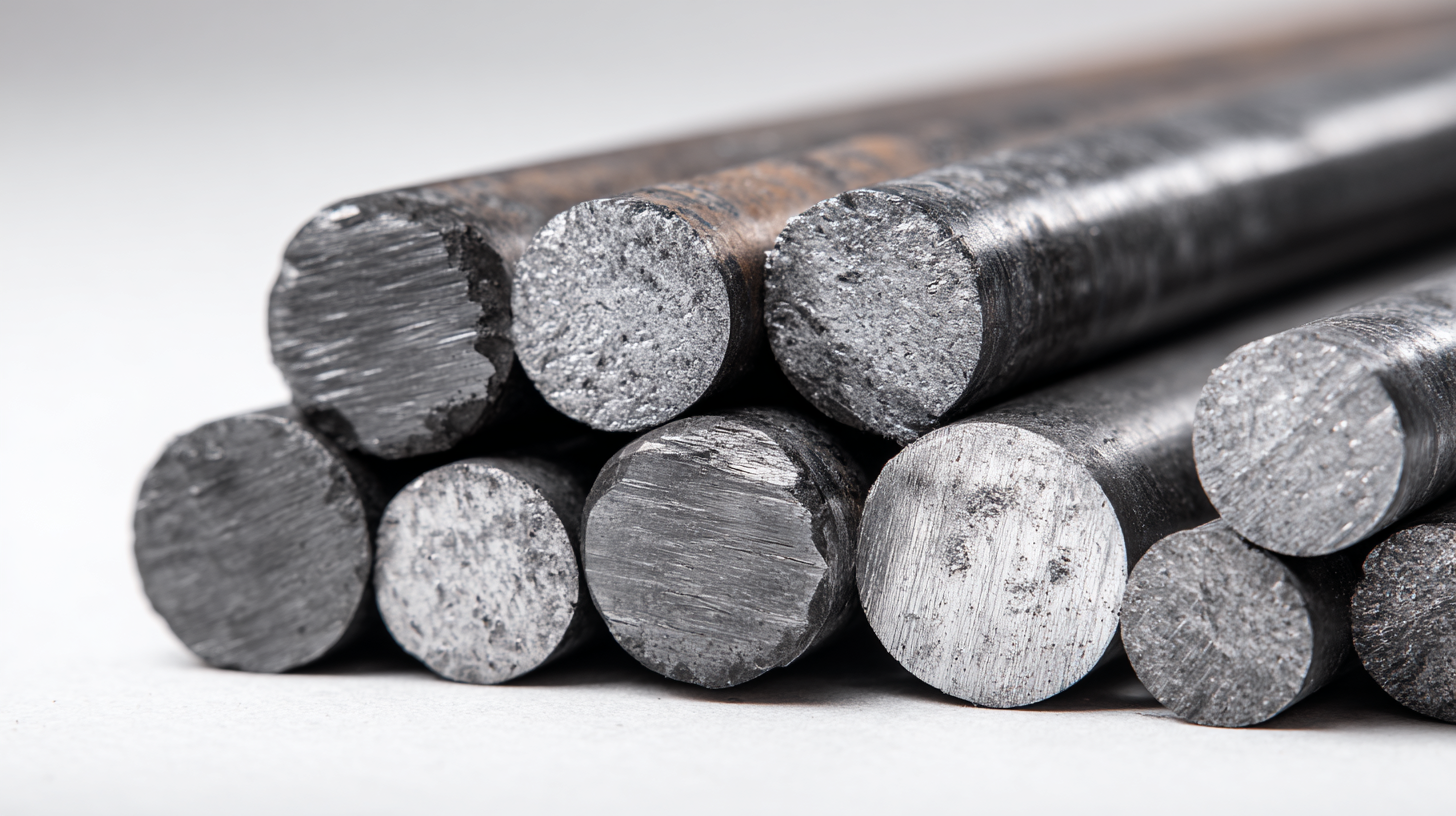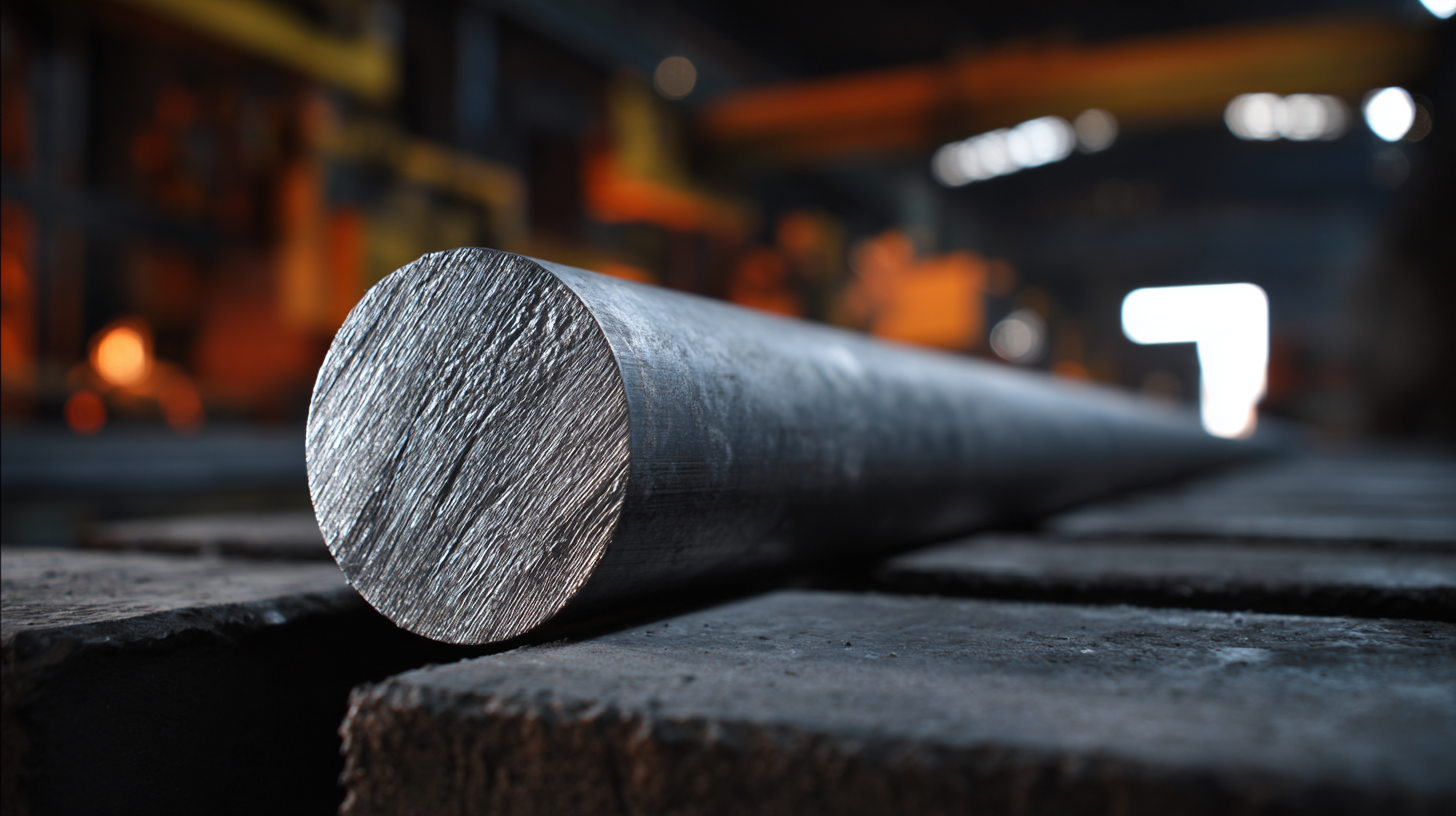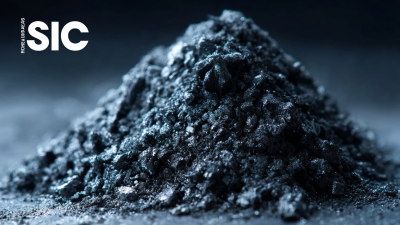Leave Your Message
In the rapidly evolving landscape of industrial applications, the choice of materials can make a significant difference in overall performance and efficiency. Among the various options available, Silicon Carbide Rods have emerged as a preferred choice for manufacturers seeking durability and resilience in extreme conditions. Dr. John Thompson, a leading expert in material science and a consultant for several high-tech industries, states, "Silicon Carbide Rods are unparalleled when it comes to high temperature and corrosion resistance, making them ideal for the most demanding applications.”

The exceptional properties of Silicon Carbide Rods, including their high thermal conductivity and low thermal expansion, contribute to their growing popularity across various sectors, from aerospace to semiconductor manufacturing. As industries strive to enhance productivity while minimizing operational costs, the attributes of Silicon Carbide Rods position them as a best-in-class solution that meets the rigorous demands of modern technology. With increased environmental scrutiny and the need for reliable performance, these rods represent not just a component, but a strategic choice for forward-thinking businesses aiming for longevity and quality in their manufacturing processes.
Choosing Silicon Carbide Rods is not merely a matter of preference; it is a decision rooted in cutting-edge science and engineering. Industry experts agree on their effectiveness, underscoring the importance of selecting the right materials to drive innovation and growth in today’s competitive market.
 Silicon carbide (SiC) rods are increasingly favored in high-temperature industrial applications due to their exceptional thermal stability and mechanical strength. They can withstand extreme temperatures that would typically degrade other materials, making them invaluable in sectors like nuclear energy and semiconductor manufacturing. Recent advancements underline the potential of SiC in these domains; for instance, SiC composite materials have demonstrated impressive performance in irradiation tests, showing resilience over prolonged periods. This characteristic not only enhances reliability but also prolongs the lifespan of components used in challenging environments.
Silicon carbide (SiC) rods are increasingly favored in high-temperature industrial applications due to their exceptional thermal stability and mechanical strength. They can withstand extreme temperatures that would typically degrade other materials, making them invaluable in sectors like nuclear energy and semiconductor manufacturing. Recent advancements underline the potential of SiC in these domains; for instance, SiC composite materials have demonstrated impressive performance in irradiation tests, showing resilience over prolonged periods. This characteristic not only enhances reliability but also prolongs the lifespan of components used in challenging environments.
Tips: When considering materials for high-temperature applications, it’s essential to evaluate their thermal conductivity and stability under stress. SiC rods typically exhibit lower thermal expansion rates compared to traditional materials, minimizing the risk of failure in critical applications.
Additionally, the unique porosity of certain SiC materials offers improved catalytic properties, suggesting a promising avenue for enhanced efficiency in processes like chemical reactions or energy generation. Incorporating innovative materials such as SiC can thus significantly enhance the safety and performance of industrial systems, especially in environments subjected to harsh conditions.
Silicon carbide (SiC) rods have gained popularity in various industrial applications due to their remarkable mechanical strength and durability. Unlike traditional materials such as aluminum oxide or carbon-based rods, SiC rods possess a unique combination of high toughness and resistance to wear, making them ideal for high-stress environments. Their impressive hardness allows them to withstand significant forces without deforming, ensuring reliable performance even under extreme conditions.
In addition to their mechanical strength, silicon carbide rods exhibit excellent resistance to thermal shock and corrosion. This durability ensures longevity in applications involving harsh chemicals or high temperatures, where other materials might succumb to damage. The ability of SiC rods to maintain structural integrity over extended periods translates to reduced maintenance costs and minimized downtime. Overall, their superior performance characteristics position silicon carbide rods as a preferred choice for industries aiming to enhance efficiency and reliability in their operations.
Silicon carbide (SiC) rods are increasingly favored in various industrial applications, largely due to their exceptional thermal conductivity characteristics. In environments where heat dissipation is critical, SiC's ability to transfer heat efficiently ensures optimal performance and longevity of industrial equipment. The high thermal conductivity of silicon carbide, which can exceed that of metals like copper, allows for rapid heat dissipation, reducing the risk of overheating and enhancing operational efficiency.
Additionally, silicon carbide exhibits remarkable thermal stability, maintaining its structural integrity under extreme conditions. This property is particularly beneficial in high-temperature applications such as furnaces and reactors, where maintaining consistent thermal profiles is essential. The combination of excellent thermal conductivity and stability allows SiC rods to maximize energy usage while minimizing waste, making them an ideal choice for modern industrial operations aiming for sustainability and efficiency. Using silicon carbide not only improves thermal management but also contributes to the overall robustness of industrial processes.
Silicon carbide rods are increasingly recognized for their cost-effectiveness and durability in various industrial applications. According to a report by Research and Markets, the global silicon carbide market is projected to reach $4.9 billion by 2027, growing at a compound annual growth rate (CAGR) of 16.9%. This growth is largely attributed to the increasing demand for high-performance materials in sectors such as automotive, aerospace, and electronics. The longevity and thermal stability of silicon carbide rods contribute to their appeal, as they can withstand extreme temperatures and operating conditions, reducing the need for frequent replacements.
Furthermore, the initial costs of silicon carbide rods may be higher than traditional materials, but their superior performance and resistance to wear lead to significant savings over time. A study from Technavio highlights that while the upfront investment might seem daunting, the lower maintenance costs and extended lifespan result in a total cost of ownership that is significantly reduced. For instance, companies using silicon carbide components report a decrease in operational downtime and maintenance frequency, thereby enhancing productivity and profitability. Thus, the adoption of silicon carbide rods not only ensures superior performance but also presents a wise economic decision for industries aiming for sustainability and efficiency.
| Property | Silicon Carbide Rods | Comparison Material | Cost-Effectiveness (%) |
|---|---|---|---|
| Thermal Conductivity (W/mK) | 120 | Alumina | 20 |
| Flexural Strength (MPa) | 400 | Borosilicate Glass | 50 |
| Density (g/cm³) | 3.21 | Silicon Nitride | 15 |
| Thermal Shock Resistance (ΔT) | 600 | Ceramic | 30 |
| Operational Temperature (°C) | 1600 | Plastic | 25 |
Silicon carbide (SiC) rods are increasingly recognized as vital components in the semiconductor manufacturing sector, largely due to their superior thermal conductivity and mechanical strength. A recent report by the Semiconductor Industry Association (SIA) indicates that the demand for SiC materials in power electronics is projected to grow at a compound annual growth rate (CAGR) of 20.6% from 2020 to 2025. This surge is driven by the need for more efficient power conversion systems in electric vehicles and renewable energy technologies.

In semiconductor fabrication, SiC rods facilitate high-temperature processes and enable the production of devices that can operate in extreme conditions. For instance, High Energy Physics (HEP) applications have seen a shift towards SiC because its wide bandgap allows for higher voltage applications, which is critical in reducing energy loss in electronics. According to a study by Yole Développement, the market for SiC semiconductors was valued at approximately $1.3 billion in 2021, highlighting a robust trend towards embracing advanced materials for next-generation electronic devices. This not only enhances device performance but also contributes significantly to overall industrial efficiency.






